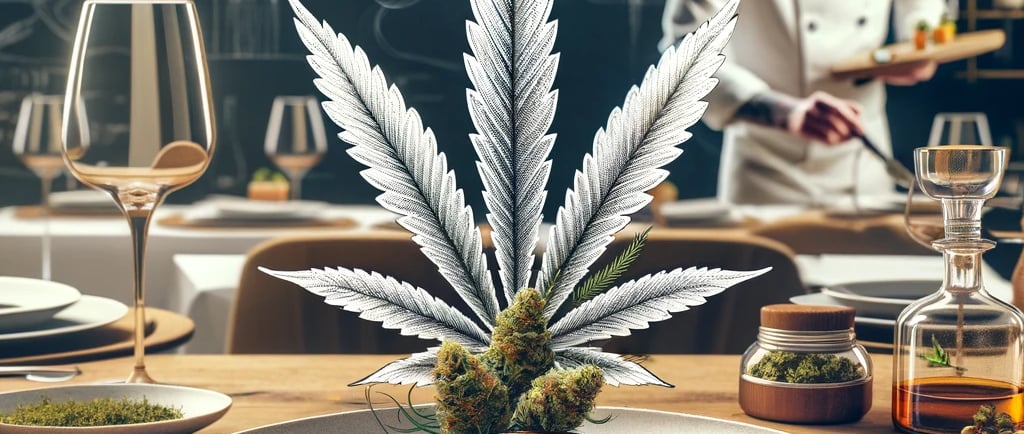Cannabis and Gastronomy: The Culinary High
Cannabis gastronomy is revolutionizing the culinary world by integrating the unique flavors and therapeutic properties of cannabis into gourmet cuisine. As the legalization of cannabis continues to expand, chefs and food enthusiasts are exploring innovative ways to incorporate this versatile plant into cooking. This article delves into the burgeoning field of cannabis-infused gastronomy, examining its impact on food culture, the creative opportunities it presents, and the challenges faced by culinary professionals.
CANNABIS GUIDE
4/17/20242 min read


The Fusion of Cannabis and Cuisine
Cannabis gastronomy goes beyond simply adding marijuana to food; it involves a sophisticated approach to flavor profiles, dosing, and the dining experience. Top chefs and culinary institutions are experimenting with cannabis to enhance flavors and provide diners with a unique psychoactive experience. This trend is not only about enjoying food but also about exploring the sensory enhancements that cannabis can offer.
Culinary Techniques and Innovations
Decarboxylation: The process of activating the psychoactive compounds in cannabis through heat is essential before incorporating it into dishes. This technique ensures that the THC is activated and can be effectively infused into various ingredients.
Infusion Methods: Cannabis can be infused into oils, butters, and alcohol, which are then used as bases for crafting exquisite dishes. These infusions allow for precise dosing and integration of cannabis into recipes without overpowering the dish's flavors.
Pairing Flavors: Chefs are exploring the aromatic terpenes in cannabis that complement certain food flavors, similar to wine pairing. For instance, a strain with citrus notes might be paired with a lemon tart to enhance its flavor profile.
Dining Experiences and Events
The rise of cannabis in gastronomy has led to the creation of exclusive dining experiences and events where culinary art meets cannabis culture. These events often feature multi-course meals with dishes that incorporate cannabis, designed to take diners on a sensory and gastronomic journey. Such experiences are becoming increasingly popular in regions where cannabis is legal, offering a new niche in fine dining.
Challenges in Cannabis Culinary Arts
While the integration of cannabis into gastronomy presents exciting opportunities, it also comes with challenges:
Regulatory Hurdles: The legal complexities of serving food containing a psychoactive substance mean that chefs must navigate stringent regulations to offer cannabis-infused dishes.
Dosing Concerns: Ensuring the correct dosing in culinary creations is crucial to prevent overconsumption and ensure a pleasant experience for all diners.
Public Perception: Despite growing acceptance, there remains a stigma around cannabis that can affect the reception of cannabis-infused foods in certain demographics.
The Future of Cannabis Gastronomy
Looking ahead, the potential for cannabis in gastronomy continues to grow. As more research emerges on the health benefits of cannabis and as societal norms evolve, we can expect more restaurants and culinary schools to embrace this ingredient. Moreover, the innovation in cannabis-infused beverages, desserts, and even savory dishes is likely to expand, paving the way for a new era in the culinary arts.
Conclusion
Cannabis gastronomy is more than a novelty; it's a burgeoning field that combines culinary art, science, and sensory experience. As chefs and gastronomes continue to push the boundaries of what can be achieved with this ancient herb, the future of dining could look vastly different. Cannabis is setting the stage for a culinary revolution, where flavor, experience, and wellness converge on a plate.
